
Rendezvous with History
The Aztec Club's Sesquicentennial Tour
Tula, Querétero
and the
Treaty of Guadalupe Hidalgo
On October 9th, while traveling from Mexico City to Querétaro we stopped at the early 16th century Franciscan town of Tula. On a hill just to the north archaeologists had discovered the remains of the Toltec capital of Tollán. We visited the ruins of the capital and chief ceremonial center with its famous Giants, the Temple of Tlahuizcalpantecuitli, the Burnt Palace and the Coatepantli sites which date from the post-classic Toltec-Tula period, circa 900-1200 A.D.
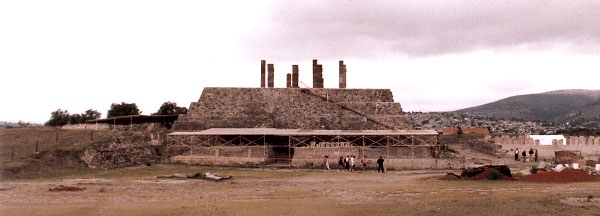
Temple of Tlahuizcalpantecuhtli and the Coatepantli (Serpent Wall)
This pyramid was dedicated to Quetzalcoatl. Jaguars and coyotes march across top rows on the east wall. Below are eagles eating human hearts, and the head of the deity Tlahuizcalpantecuhtli (Quetzalcoatl in his aspect of Venus, the Morning Star). This structure once supported a temple of which nothing remains but the stone carved roof supports.
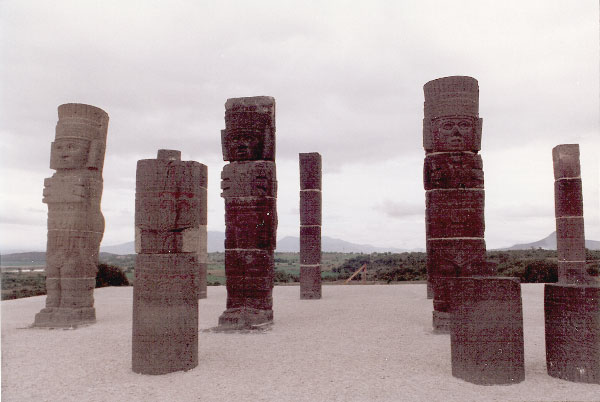
Atlantes and sculptured columns
A complete figure measures over 3.5 m high and represents a warrior richly attired, wearing a feathered headdress, rectangular ear pieces, a butterfly pectoral, a belt that clasps in the rear with a great mirror (Tezcacuitlapilli, associated with a shield), necklace, bracelets, anklets, and sandals decorated with plumed serpents.
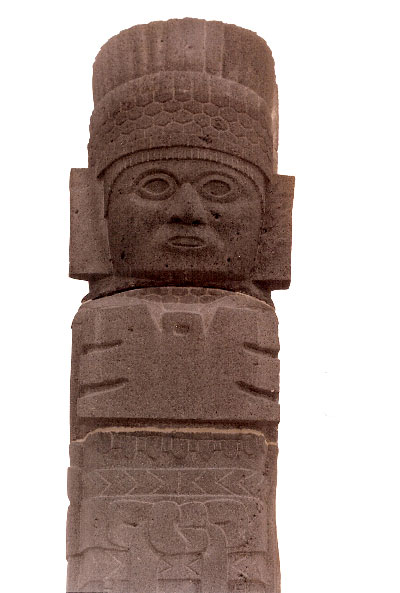
Closeup of an Atlantes
These Atlantes have smooth elliptical mouths and eye sockets which were probably inlaid with shell or obsidian. One hand holds an atlatl. There are still traces of the red and white pigment with which the warriors were painted. Similar figures adorn the pillars of the same height that supported the roof beams in the rear chamber of the temple.
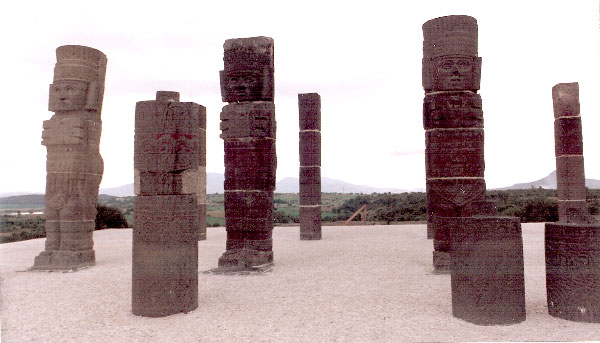
Atlantean columns amidst the Atlantes
The Atlantean columns amidst the Atlantes are giant Toltec sculptures representing warriors ready for battle. An atatl is held at the side, and the butterfly pectoral and drum headdress are costume elements of those in combat. Within the chamber, the atlantean Toltec warriors must have been an intimidating group. Each atlantean consists of four drums held together by dowels, and both their uniformity and method of construction suggest mass production.
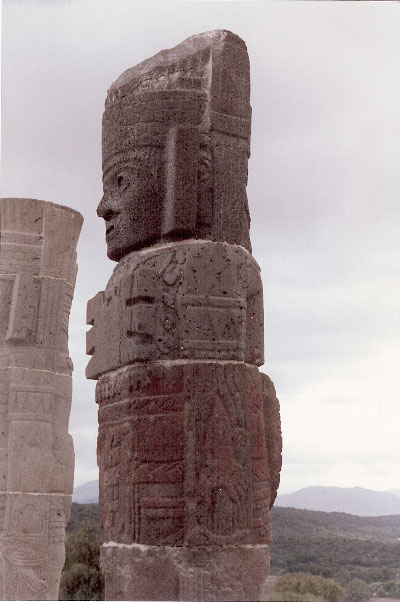
Side view of an Atlantes
Querétero
and the
Treaty of Guadalupe Hidalgo
Upon our arrival at the city of Querétaro, in 1848 the provisional capital of the fleeing Mexican government, we placed a wreath in the very room where
the ratified
Treaty of Guadalupe Hidalgo was exchanged on May 26, 1848, ending the Mexican War.
The treaty was signed by
Nicholas
P. Trist on behalf of the United States and Luis G. Cuevas,
Bernardo Couto (Orizaba, 1803 - City of Mexico, 1862) and Miguel Atristain as plenipotentiary representatives of Mexico on February 2 1848, at the main altar of the
Old Basilica of Guadalupe (Templo Expiatorio a Cristo Rey at the Basílica de Nuestra Señora de Guadalupe)at Villa Hidalgo (today Gustavo A. Madero, D.F.), slightly north of Mexico City. The Basilica is near the place where it is said Our Lady of Guadalupe appeared in front of
Juan Diego Cuauhtlatoatzin.
The Treaty was subsequently ratified by the United States Senate on March 10, 1848 and by the Mexican government on May 19, 1848.
Their ratifications were exchanged at an ornate table inside this building on May 30, 1848.
The ratifications were exchanged in the city of Querétaro on the May 26, 1848 at a conference between Their Excellencies
Nathan Clifford and
Ambrose Hundley Sevier, Commissioners of the United States of America, with full powers from their Government and His Excellency Don Luis de la Rosa, Minister of Foreign Affairs of the Republic of Mexico. It was agreed that after adequate conversation respecting changes requested by the United States to prepare an addendum, The Protocol of Querétaro, which was signed in the name of their respective governments and the ratified Treaty exchanged.
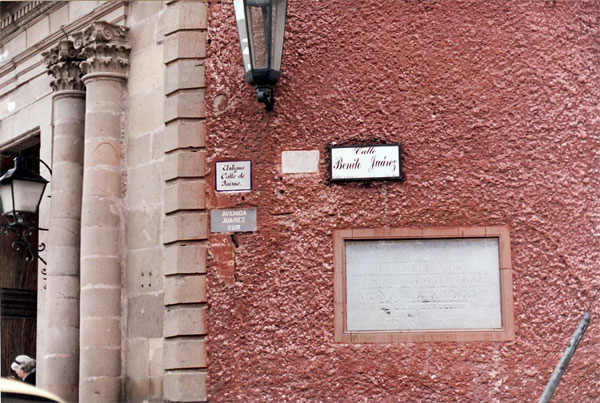
The building marker confirms that inside this building
the
signed Treaty of Guadalupe Hidalgo was exchanged.
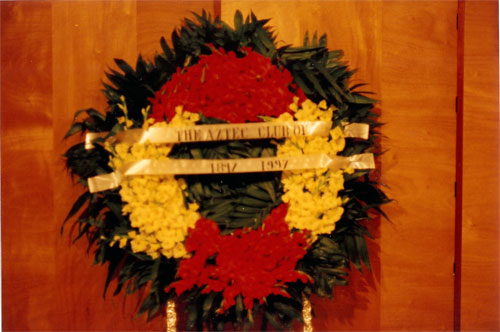
In a brief ceremony, a memorial wreath was left
inside the building at the very table
upon which the Treaty of Guadalupe Hidalgo was
exchanged.
The splendid beauty of Querétaro, today a commercial center of nearly 1 million inhabitants, is matched only by its historic importance as four of Mexico's most significant events occurred there. The city was founded long before Europeans discovered the New World and became part of the Aztec empire in the 16th century. We stayed at Mesón de Santa Rosa, located on the Plaza de Armas.
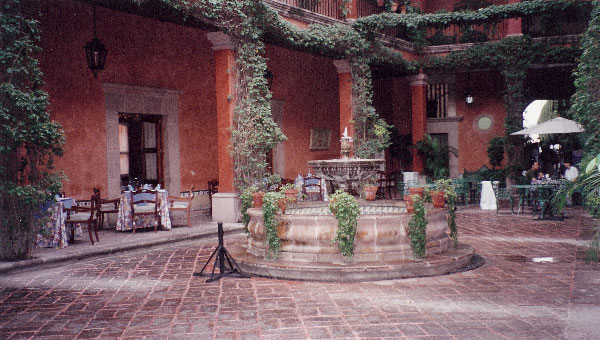
Courtyard of the historic Mesón de Santa Rosa Hotel
Querétaro, Mexico
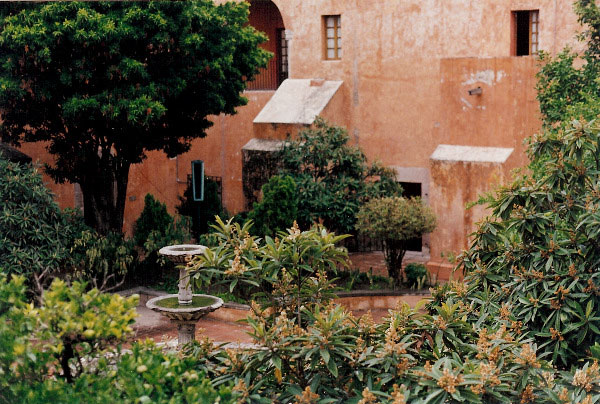
Gardens at the historic Mesón de Santa Rosa Hotel
Querétaro, Mexico
Across the street from our hotel, at the Casa de la Corregidora, the plans to secure Mexico's independence from Spain were formulated in 1810.
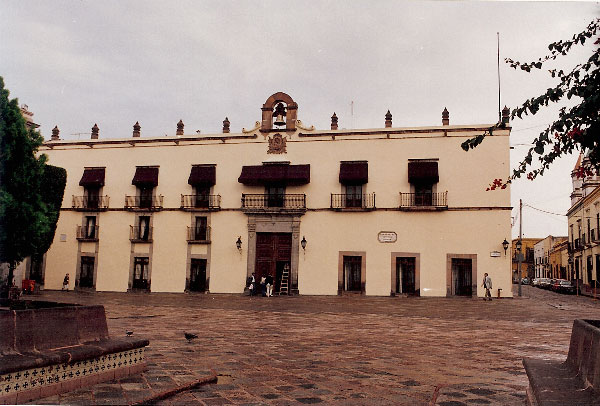
Casa de la Corregidora
Querétaro, Mexico
On that occasion, the wife of the city's mayor, Doña Josefa Ortiz
Dominguez, upon overhearing that her husband planned to arrest the conspirators, she whispered instructions to a messenger through a keyhole to warn insurgents Father Miguel Hildalgo and Capt. Ignacio Allende. They avoided capture and three days later declared Mexico's independence from Spain from the nearby village of Dolores. Maximilian faced a firing squad at the city's Hill of the Bells in 1867 after the defeat of his forces by the People's Army of Benito Juarez. In 1917 the Mexican Constitution was signed in Querétaro.
We visited the fountain of
Junípero Serra, builder of California's famed missions, and the
Museo de Arte, located in what was once the San Agustin Monastery, a magnificent example of 18th century baroque architecture.
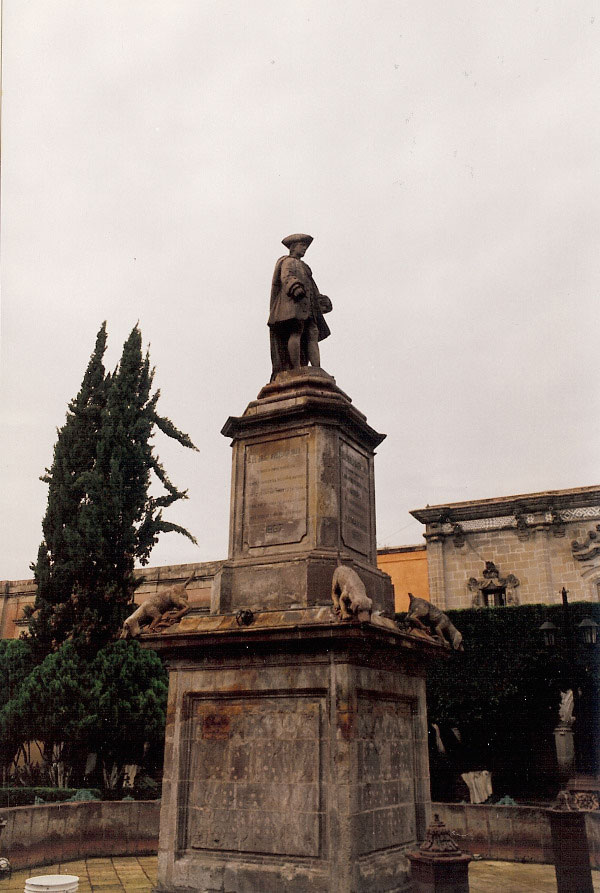
Fountain of Junípero Serra
Querétaro, Mexico
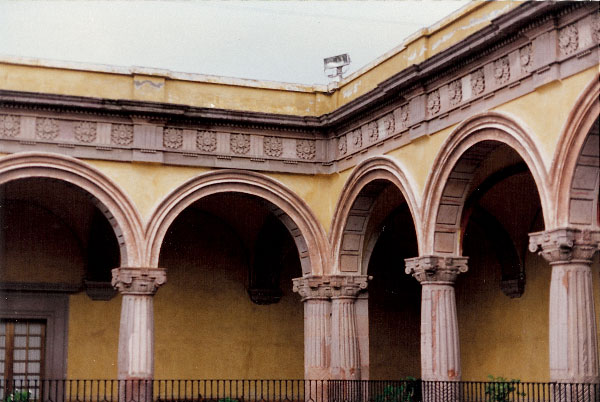
Museo de Arte
located in the San Agustin Monastery
Querétaro, Mexico
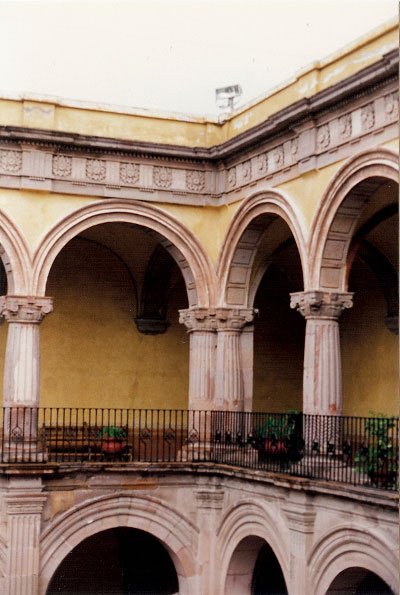
Museo de Arte
located in the San Agustin Monastery
Querétaro, Mexico
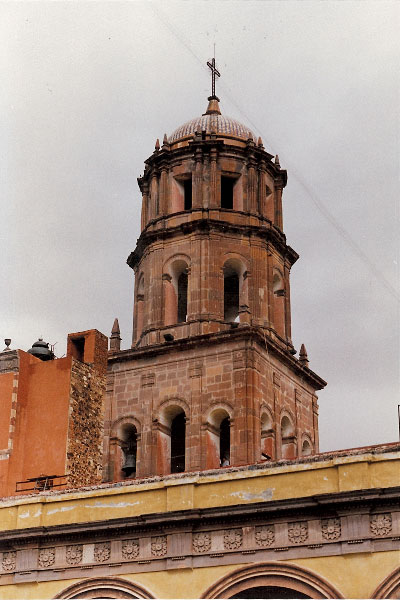
Museo de Arte
located in the San Agustin Monastery
Querétaro, Mexico
Our evening was highlighted by a sumptuous Mexican Fiesta dinner, complete with mariachis and a folklore ballet, in the courtyard of our historic hotel.
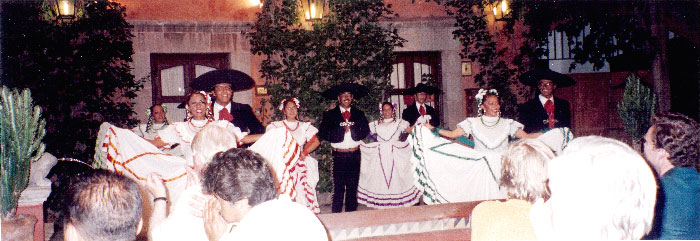
Folklorio
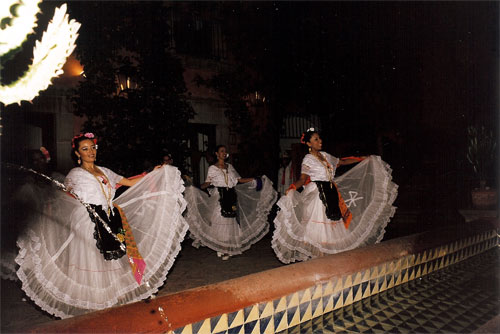
Folklorio
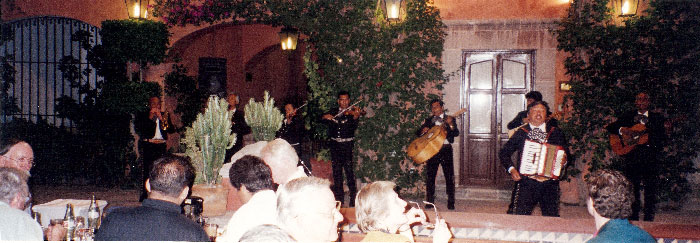
Mariachis
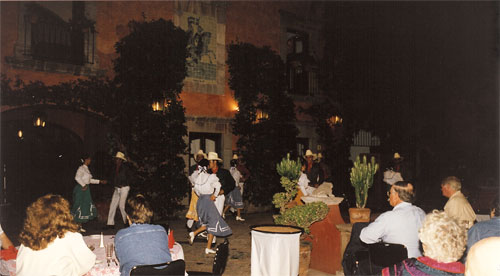
|
![[Aztec Club Logo]](Aztec7.gif)


















